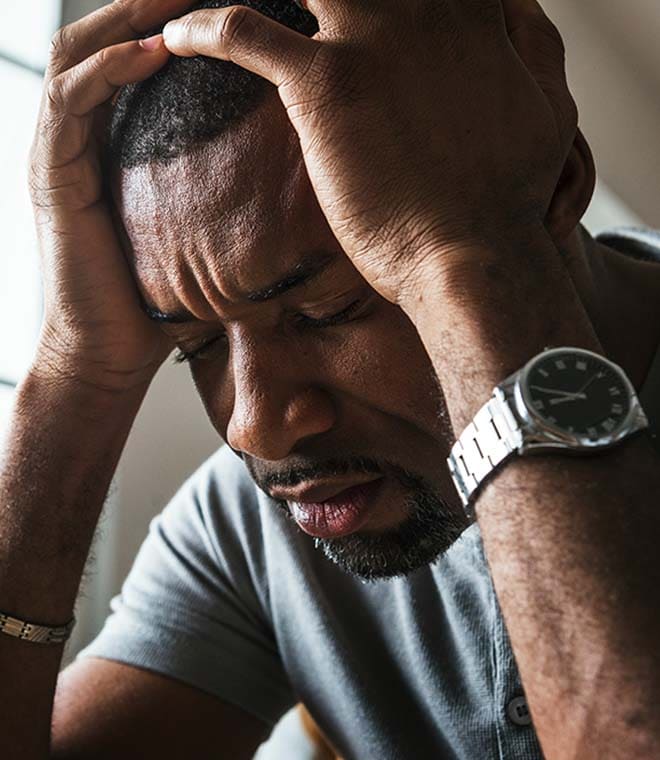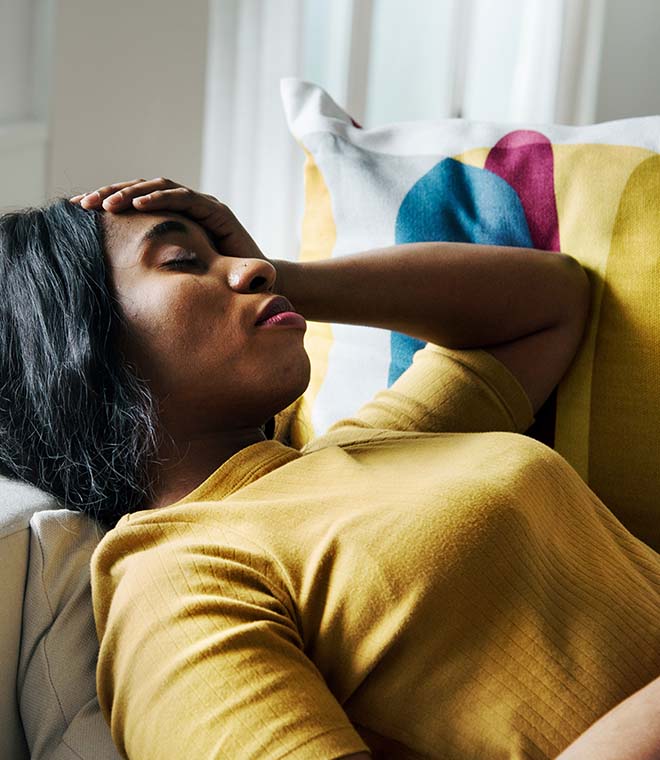Health
Headache vs. migraine: What’s the difference?
By Dr. Chelsea Grow, board-certified neurologist and headache specialist Feb 07, 2025 • 7 min
About 20% of Americans experience a migraine attack at some point. Migraine is a neurological condition that has a unique set of causes and has an important distinction from a regular headache, being that other associated symptoms such as nausea and sensitivity to light usually occur. Understanding the differences between a headache vs. a migraine can help you determine when to seek treatment for head pain.
What is a migraine?
A migraine attack is not just a bad headache. Migraine is a disabling neurological disorder that causes people to miss important time with family and friends. Those who suffer from migraine attacks also often miss a number of days of work due to the severity of symptoms. People usually experience a migraine attack in three or four stages:
- Prodrome: A few hours or days before a migraine, you may experience changes in mood, fluid retention, food cravings, moodiness and fatigue as common prodromal symptoms.
- Aura: This stage may happen before or during the attack phase and can last for up to an hour. Symptoms may include sensory disturbances such as vision loss, seeing flashes of light or bright spots, difficulty with speech, numbness or weakness of the face or one side of the body, and a pins-and-needles sensation in the extremities. Only 15% to 25% of people with migraines experience auras.
- Headache: The headache phase of a migraine attack is characterized by pain, which is described by some as a throbbing or pulsing sensation, often on one side of the head. Sensitivity to light and sound and digestive issues, like nausea and vomiting, may accompany the pain. Without treatment, a migraine can last from 4 to 72 hours.
- Post-drome: Following a migraine attack, you may experience changes in mood and energy levels for a few days. Some people feel euphoric and restless, while others become fatigued and disoriented.
Causes of migraines
Scientists are still exploring migraine attacks through research, but genetics and environmental factors appear to play a role. Migraine attacks also tend to occur in response to triggers, which vary from person to person. Some common migraine triggers include:
- Hormones: Hormonal changes due to menstruation, pregnancy and menopause can trigger migraines in women. Some women also experience migraines due to hormonal medications like oral contraceptives and hormone replacement therapy (HRT). In some cases, hormone medicines may reduce migraines.
- Beverages: Red wine and other types of alcohol and caffeinated beverages, like coffee and soda, may cause migraines in some people.
- Stress: Chronic stress or a sudden stressful situation may bring on a migraine.
- Sensory stimulation: Some people develop migraines due to bright lights, loud noises and intense smells like perfume or paint fumes. Dizziness or vertigo may also occur.
- Sleep disturbances: Too much or too little sleep may cause migraines in certain individuals.
- Weather: Migraine sufferers may experience migraines when the barometric pressure rises or falls rapidly.
- Physical exertion: Intense exercise could trigger migraines.
- Diet: Some migraines are triggered by processed foods, artificial sweeteners, certain preservatives or skipping meals.
What is a headache?
A headache is pain that you experience in your head. It may be widespread or confined to a specific area. A primary headache is one that’s related to the nerves and tissues in your head and doesn't indicate an underlying medical condition. A secondary headache occurs as the result of an illness or medical condition.
Common headache types and causes
Migraines are just one type of headache but there are many more types that can occur. Other common headaches include:
- Tension-type headache (TTH): Stress or tension in the muscles of the neck is believed to be a possible cause of tension-type headaches. People often describe this type of headache as a band of pressure or tightness that wraps around the head. Normally, tension-type headaches last for a few hours without treatment, but in some cases, they may linger for days. Tension-type headaches are the most common types of headaches.
- Cluster headache (CH): Cluster headaches typically come on quickly and cause severe pain behind or around the eye. The pain can radiate to the rest of the head, as well as the face and neck. Cluster headaches often happen intermittently for weeks or months and can cause redness of the eyes, nasal congestion, facial sweating, flushing of the face, swelling around the eye and a drooping eyelid on one side.
- Sinus headache: Sinus headaches happen when congestion in the sinus passages puts pressure on the surrounding tissues. This leads to pain and tenderness behind the eyes, nose and cheeks. Many people experience the most severe pain in the morning. Discomfort may also increase when you bend over.
Is it a migraine or a headache?
Without a proper diagnosis, it can be difficult to determine whether your symptoms are due to a migraine or another kind of headache. Generally, people can often distinguish the two based on the severity of the migraine attack and the accompanying symptoms, like light sensitivity and nausea, that don’t typically occur with other types of headaches.
If you're experiencing new head pain or pain that interferes with your daily activities, talk to your healthcare provider. They can conduct an examination and order diagnostic tests as needed to determine whether your discomfort is due to migraines or another type of headache. Your provider can then prescribe the right treatment to manage your symptoms or refer you to a specialist for treatment.
Updated by Julie McDaniel, MSN, RN, CRNI, February 2025.
Sources:
- https://www.ninds.nih.gov/health-information/disorders/migraine
- https://www.ninds.nih.gov/health-information/disorders/headache
- https://www.uptodate.com/contents/migraine-in-adults-beyond-the-basics
- https://www.uptodate.com/contents/estrogen-associated-migraine-headache-including-menstrual-migraine
- https://www.merckmanuals.com/professional/neurologic-disorders/headache/migraine
- https://acaai.org/allergies/symptoms/headaches/
- https://www.uptodate.com/contents/evaluation-of-headache-in-adults
- https://www.health.harvard.edu/a_to_z/migraine-a-to-z




